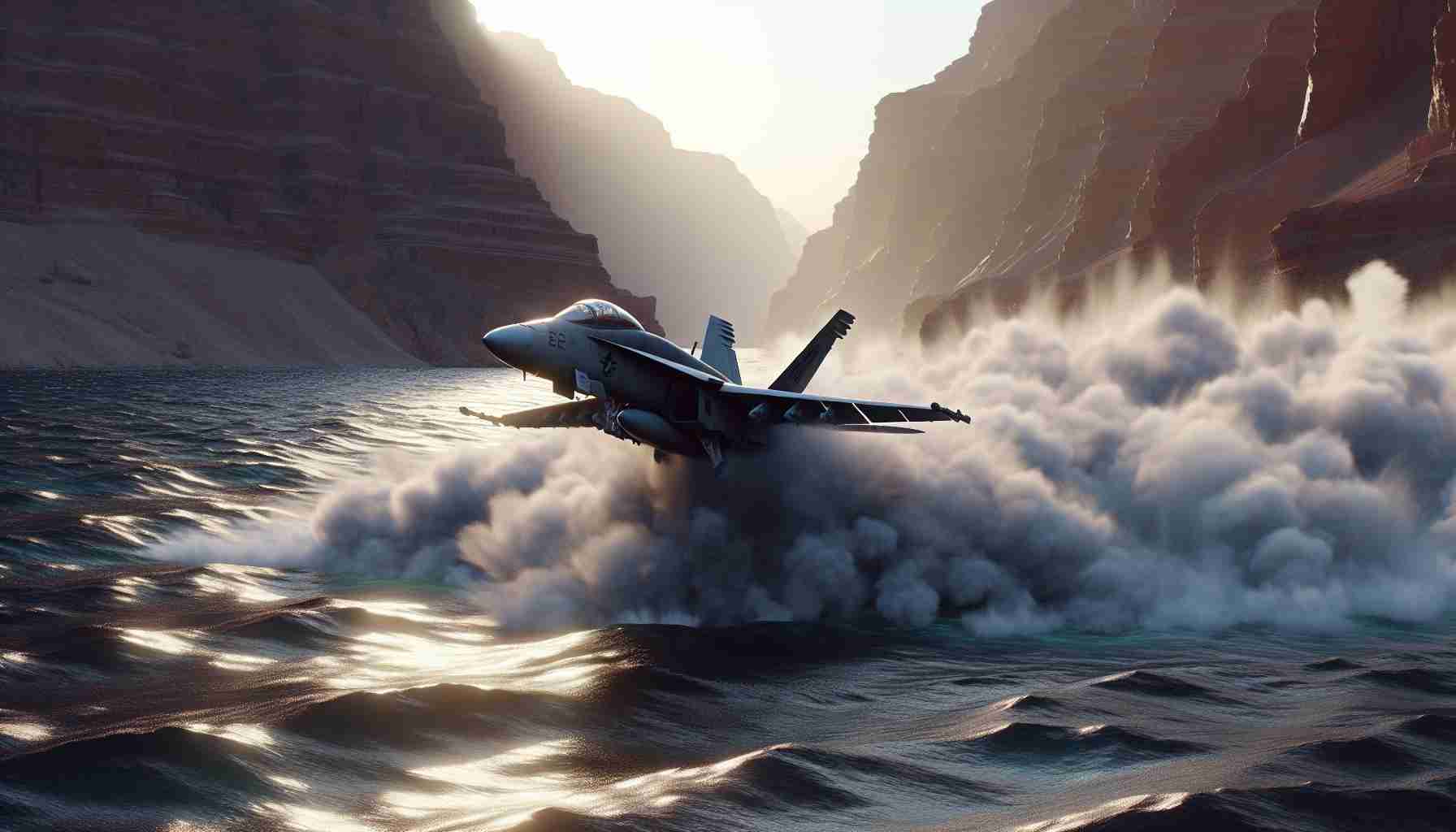In a shocking incident over the Red Sea, a U.S. Navy jet narrowly evaded being shot down in what is being described as a “friendly fire” mishap. On the same night another fighter jet was hit, an F/A-18 Super Hornet escaped a second missile launched from the USS Gettysburg by a mere 100 feet while trying to land on the USS Harry S. Truman, insiders reveal.
Navy officials have confirmed the firing of a second missile but are investigating whether it was intentionally targeting the jet. Questions have arisen about whether the guidance system on the USS Gettysburg’s missile failed during the exercise.
The near shoot-down of the second jet adds a harrowing layer to an already intense situation as the Truman Carrier Strike Group was actively engaged in precision airstrikes against Iran-backed Houthi rebels in Yemen. The cruiser mistakenly hitting its own forces has caused military personnel to question the preparedness and training on the Gettysburg.
During the operation on December 21st, which was the group’s initial mission off the Yemeni coast, the U.S. forces responded to enemy fire by neutralizing various aerial threats and anti-ship missiles. The potentially tragic mishap highlights the inherent dangers of operating in a war zone where split-second decisions can have dire consequences.
As the navy continues its inquiry, the exact circumstances of this “friendly fire” incident remain under scrutiny. The incident underscores the volatility of military missions in contested regions.
U.S. Navy’s Red Sea Incident Sparks Debate on Military Preparedness and Technology
The recent near-miss involving a U.S. Navy jet over the Red Sea has spotlighted ongoing challenges in military operations, including technology reliability and personnel training. As new details emerge, the incident raises crucial questions about safety protocols and equipment performance during high-stakes missions.
Technological Concerns and Insights
A key area of focus is the guidance system of the USS Gettysburg’s missile, which fired unexpectedly, nearly striking a U.S. F/A-18 Super Hornet. Experts suggest that advancements in missile technology need to ensure fail-safes to prevent such occurrences. This incident emphasizes the importance of robust testing procedures for guidance systems, particularly those deployed in combat scenarios. Enhanced algorithms and AI could be pivotal in reducing the risk of “friendly fire” mishaps.
Evaluation of Military Training and Preparedness
The episode has sparked a reevaluation of training protocols on the USS Gettysburg and similar vessels. Military analysts argue that regular and rigorous training exercises are crucial for preparing personnel to handle unexpected situations. This incident could lead to revised training curricula that emphasize response strategies to potential guidance system faults and other technological anomalies.
Controversies and Debates
The near-disaster has ignited debates within military circles regarding the chain-of-command decisions and coordination during the operation. There is a growing call for clearer communication channels and decision-making frameworks that can effectively respond to sudden threats in dynamic environments like the Red Sea.
Comparisons to Past Incidents
Historically, friendly fire incidents have been rare but significant, each offering lessons that shape future military strategies. Comparing the Red Sea incident to similar past events could provide valuable insights into improving both technological and strategic resiliency.
Future Predictions and Directions
Looking forward, the U.S. Navy and other military forces might increasingly invest in advanced defense technologies and training programs. Integration of next-gen systems like predictive analytics and real-time data integration could play a crucial role in minimizing human error and technological failure.
U.S. Navy Innovations and the Path Ahead
The incident underscores the importance of continual innovation in military technologies and practices. As the U.S. Navy investigates and adapts from this experience, there is potential for groundbreaking developments that could redefine military engagement protocols globally.
The volatile nature of military missions in contested regions necessitates steadfast commitment to safety, preparedness, and technological advancement. As investigations continue, the military community watches closely, aiming for strategic improvements that uphold both the efficiency and safety of its operations.







